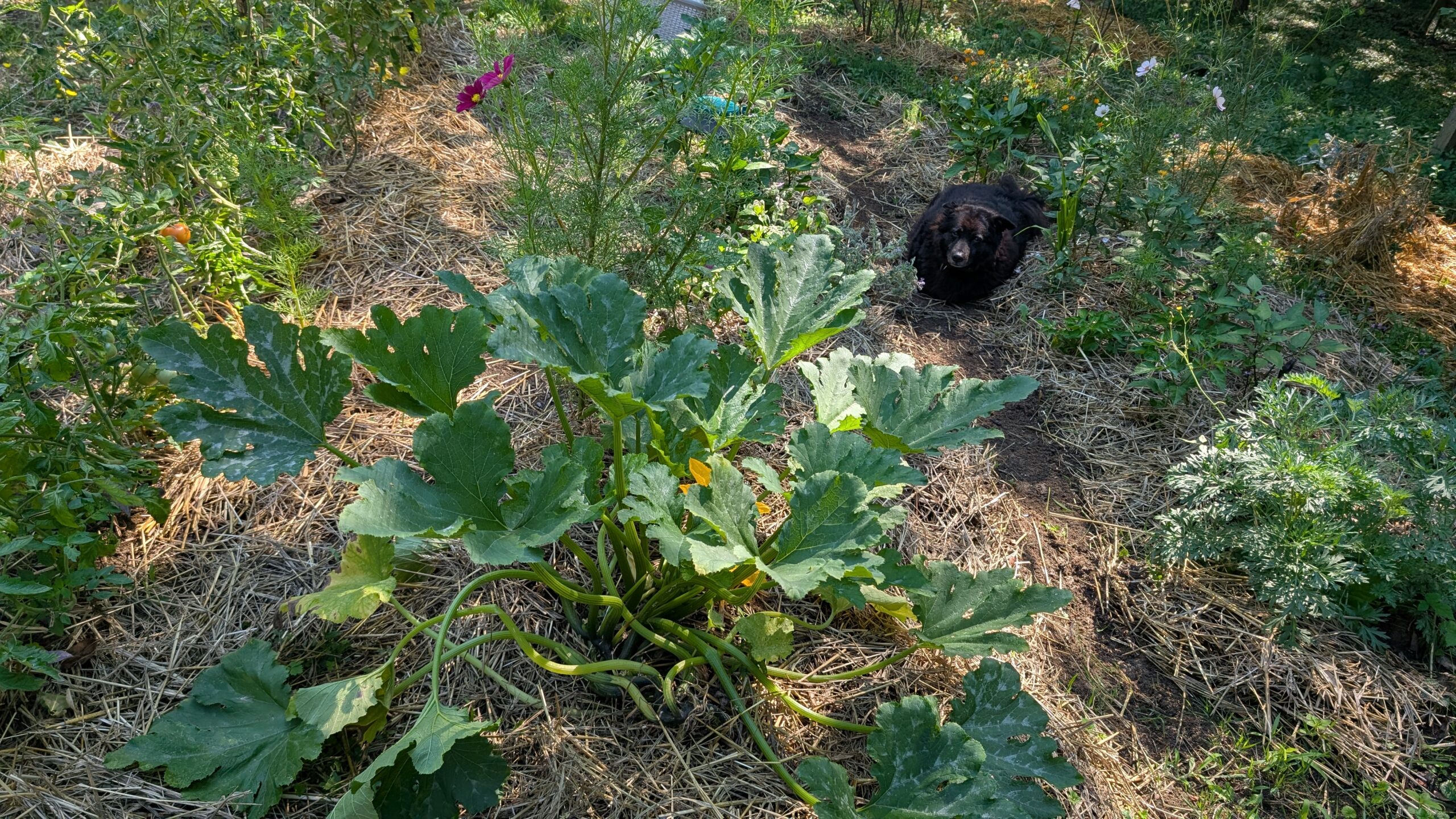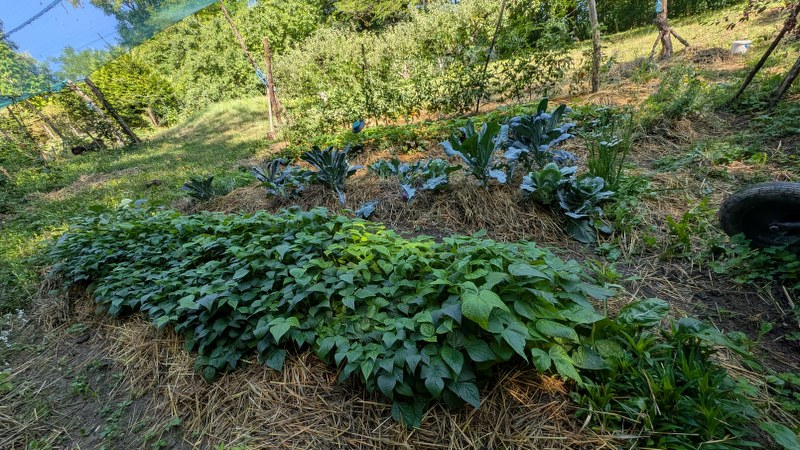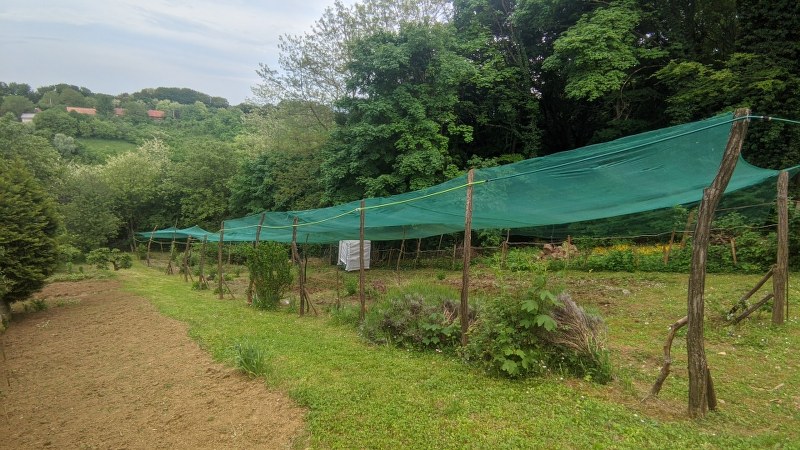Most of us grow brassicas the old fashion way. We grow seedlings and transplant them into the garden. We keep them watered and wait for them to grow heads. But what when they refuse to grow one? Is the problem in the variety which we grow, the conditions or climate? Can we grow them some other way?
No heads issue
Growing brassicas in my garden has been a real problem no matter what I did. The cold spring and autumn shortened our season so much that there was no way to grow any brassica heads. The cabbages and kale would miss that initial spring boost, suffer through the summer heat, and rot under the constant cold and rain in autumn. A few years back, I decided that the situation was going nowhere, and started growing leafy kale. The leafy kale turned out to be a good solution, and I grew never more kale that season.

The situation with seeds in Croatia is fairly bad. We are a part of the EU, and should be able to grow and buy any EU seed here, but the reality is completely different. Most stores sell only a couple of varieties, and I just can’t find the varieties which I’d like to grow. Ordering from other European countries doesn’t work, the shipping fees are huge and the corruption in the postal services is an issue. There are big chances we’d never get our packages. This is why I needed to find another solution.
Plastic bottles as pots, yes, please
I decided to grow all my brassicas as leafy brassicas and collect as many leaves as possible. Leaves on brassicas are all perfectly edible. When we grow brassicas we usually grow heads and remove the outer leaves. Brassicas, like cauliflower and broccoli, are mainly grown for their heads, but the truth is the leaves are just as edible. So if you can’t grow heads, why not try and grow as many leaves as possible.
This year I wanted to grow large amounts of leaves, and for this, I needed more space. Using the main garden for leafy brassicas didn’t seem like a good option due to the cold spring. I wanted a method that would help me grow as many plants as possible. This is why I researched in the tiny garden communities about the way to squeeze many plants together. Eventually, I came across some articles about growing food in PET juice bottles. The articles mostly talked about growing lettuce and dwarf tomatoes, but I decided to try and grow brassicas.
I was thinking that when I pull out the stems in the autumn, the roots aren’t too deep, so the plants in plastic bottles could work just fine, especially since I’m not aiming for the head production. Luckily we drink a lot of non-sugar sodas and sparkling water, so we always have a lot of plastic bottles. Instead of recycling them, I decided to collect them and use them as pots. I’ve also planted a couple of dozens of garden brassicas to be able to compare the results.

Starting the PET bottle project
Over the winter I’ve collected every bottle that we bought. We always buy larger bottles(2litres) since they are much cheaper than the smaller ones, and those bottles seemed like the perfect size for the new project. I just needed to find a way to make them work.
At first, I wanted to just cut off the top, but that would mean that I’d need a lot of saucers under the bottles to make the bottles work as pots. The summers here are very hot, and if the soil dries quickly, watering it would result in the momentary releasing of the water through the bottle. This is why I asked my hubby to cut the bottle in the widest part making the lower half a water holder. This way the holder would retain the water, and the soil would slowly drink it when needed. There’s also one hole for excess water drainage.

The planting of the brassicas was pretty much the same as the garden planting. I’ve mixed soil with the fertilizers and transplanted the seedlings. Once transplanted, for easier handling I’ve placed all of the bottles in plastic crates.
Plastic crates proved to be very effective as bottle holders. They are quite heavy, especially when the soil is wet, still, they hold the bottles from turning over and protect the plants from the wind. Another great side of crates is that you can easily move them when needed.
That’s exactly why I’ve been doing it for the good part of the spring. I’ve moved my plants to get the best conditions possible. In the spring while it was cold, I moved them to the front sunny yard, in late spring, I moved them to the side yard, and now while it’s really hot they are all located in the back yard. I will probably move them a couple of more times.

Was it worth it?
With all the moving, extra watering, and fertilizing, the brassicas in bottles turned out to be more work than the ones in the garden, but the effort was worth it. The bottled brassicas came almost a month earlier than the garden ones. The leaves grew astonishingly quickly and in just a couple of weeks, I had my first harvest. The harvest is fairly easy and the same as the garden leafy harvest. The only thing I need to be extra careful about is not to cut the middle leaves off. If the middle leaves are removed the plant is gone.

After each harvest, I added some more organic fertilizers and quickly plants started growing new leaves. In just two weeks the brassicas were ready to be harvested again. The garden brassicas have now caught up with bottled brassicas and I harvest both at the same time, but still, bottled ones gave me 2 extra harvests.
How long will they last?
So far I haven’t seen any signs of slower leaf production, or decay in quality. The plants are still acting as if they were meant for this kind of production even though only kale is a leafy variety. I didn’t see any signs of bolting either. Still, I already prepared more seedlings for the second production of leaves, which I’ll do next week, and I started some more cabbages for an autumn production. Now that I know that they grow so well in the front yard during colder months I’m hoping to have fresh brassicas in bottles even during winter months.

So far the only problem I had with the brassica leaves is storing them since my freezer is too small for all my veggies, but I’ve solved this by starting to dehydrate them. The brassica leaves are very easy to dehydrate, especially in the oven since they are young and tender. They dehydrate in just a couple of hours at 50°C (122°F). I remove the stems and dehydrate them separately, as they need a bit longer to dehydrate, but I will also use them in meals. The leaves that I’ll use during winter are stored in the glass jars in a dark basement, and the ones that I’ll use soon are in zip bags. Both hold perfectly well and don’t crumble if you don’t crush them.

So in my opinion plastic bottle-grown brassicas are a definite plus, and I’ll be growing them in the future. They are a perfect way to get as many brassicas leaves as possible in a small space and a perfect method for gardens with difficult growing conditions. They can be moved easily and even hidden away during extreme weather. One seed will give us many meals and pay itself off multiple times.






Leave a Reply